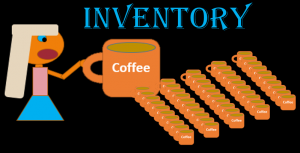QuickBooks Online 2021 30 day free trial setup. Let’s get into it with Intuit QuickBooks Online 2021. Here we are on the Intuit website Intuit being the owner of QuickBooks, this is the first place I would go for anything that’s going to be QuickBooks related. Because if you just do a search into your favorite browser, such as Google, it might take you to some other websites. And you want to go here first, because this is the source. These are the owners of QuickBooks.
Posts with the Partnership tag
Day Free Trial Setup – .7 30
QuickBooks Online 2021 30 day free trial setup. Let’s get into it with Intuit QuickBooks Online 2021. Here we are on the Intuit website Intuit being the owner of QuickBooks, this is the first place I would go for anything that’s going to be QuickBooks related. Because if you just do a search into your favorite browser, such as Google, it might take you to some other websites. And you want to go here first, because this is the source. These are the owners of QuickBooks. So it’s Intuit, i NTU, i t.com, that’s into it, I empty you it.com. What we’re looking for here is to set up a free 30 day trial version of the software, which we will have for a limited time, that to been 30 days.
Balance Sheet Continued 215
Corporate Finance PowerPoint presentation. In this presentation, we will go into more detail about the balance sheet. Get ready, it’s time to take your chance with corporate finance, balance sheet continued. Remember when we’re thinking about the financial statements, we can break them out to two separate objectives. If we’re considering this from an investor standpoint, that is, where does the company stand at a point in time, and what’s the likelihood or their earnings potential in the future, which we will typically based on past performance, therefore, you’re going to have the timing statement and the point in time type of statement. So when we think about the balance sheet, that’s going to be the point in time type of statements. So if you’re looking at the financial statements for the year ended December 31, the balance sheet will be as of the end of the period, in this case, December 31, as opposed to the timing statements, which are going to be the income statement being the primary statement that should come to mind measuring performance, which will be as of January through December 31 measure and how well we did for that range of time. So our focus over here is going to be on the balance sheet.
Types of Business Organizations 120
Corporate Finance PowerPoint presentation. In this presentation, we will discuss types of business organizations, including the corporation, partnership, and sole proprietorship Get ready, it’s time to take your chance with corporate finance types of business organizations. Now, as we go through here, note that we’re focusing in on corporate finance, and therefore on the corporate type of business organization, but many of the concepts that we will learn will be applicable to all types of business organizations. Therefore, we want to have a general idea of the different main kind of components or main types of business organizations. So those will include a sole proprietorship, partnership, and a corporation.
Partnership Comp Prob Supplies Purchase – 40 Journal Entry Supplies Purchase on Account
Supplies purchase on account for a partnership will record the purchase of supplies with no cash. We will enter the accounting journal entry for supplies in the general journal and then post the accounting transaction to the general ledger, that will be used to generate the trial balance. We will debit the asset supplies and credit the liability of accounts payable. There will be no effect on net income because we have not yet used the supplies and therefore will net expense it in accordance with the matching principle. We will reduce the asset of supplies and record the related expense during the adjusting process.
For more accounting information see website.
Partnership Withdraws – Partners Draws Journal Entry
Partners withdraws will record the journal entry for the partners in a partnership withdrawing cash for personal use. We will enter the partners draws journal entry in a general journal for three partners and then post the draws journal entry to a worksheet so we can see the effect on the accounting equations, accounts, and trial balance. We will debit withdraws account for each partner and credit cash. The draws accounting is a equity account that goes up with a debit but does not effect net income The draws account can be thought of as a contra equity account because most equity accounts have a credit balance and draws has a debit balance.
For more accounting information see website.
Partnership Closing Process – Closing Process for Partnership In Excel
The accounting closing process for a partnership is much the same as the accounting closing process for other entities like a sole proprietorship or corporation except that the last to steps will involve different accounts, different equity accounts. The goal off the closing process is to close out temporary accounts including income statement accounts of revenue and expense accounts and draws. The closing out of temporary accounts prepares the trial balance for the next time period the next month or year. We will have a four step closing process. The first step will close revenue to an income summary account. The second step will close expenses to and income summary account. The third step will close the income summary account, how having an amount equal to net income, to the related capital accounts according to their profit sharing agreement. The fourth and final step will close out draws to the related capital accounts. For more accounting information see website. http://accountinginstruction.info/cou…
Partner Leaves Partnership Cash Greater then Capital Acco
The journal entry for a partner leaving a partnership. When a partner leaves the partnership we will need to take the partnership capital account down to zero with an adjusting journal entry. The partners leaving the partnership will generally is paid in some format, topically with cash. It would be easiest of the partner gets paid an amount equal to the partnership capital account resulting in a credit to cash and a debit to the capital account. It is often the case, however, that the partners is paid more or less then the amount of their capital account. The difference will be allocated to the remaining partners either increasing or decreasing their capital accounts. For more accounting information see website. http://accountinginstruction.info/cou…
What are the key characteristics of a partnership?
Discussion question related to partnership of: What are the key characteristics of a partnership? Contrast them with other types of entities Accountinginstruction.org
What Entity Type Should My Business Be?
There are many useful ways to separate and categorize business entities, one being by business form, by type of business structure, another being by a business’s relation to inventory, whether the business is selling inventory and whether they produce the inventory they are selling.
Three broad categories of business structure are a sole proprietorship, partnership, and corporation.
Sole Proprietorship Business Structure

A sole proprietorship is a business owned by one person and is the most common type of business in the United States. The benefits of a sole proprietorship are that they are easy and inexpensive to form. An individual who starts acting as a business, generating revenue, is a sole proprietor by default unless they create some other type of organizations. The income from a sole proprietor is taxable but will be reported on the individual tax return, on Form 1040 supported a supplemental Schedule C.
The disadvantages of a sole proprietor include limited personal liability protection and a limited ability to generate capital when compared to other types of organizations.
Partnership Business Structure
 A partnership is similar to a sole proprietor except that the business now has two or more partners. A partnership has the same benefit of easy formation and the same drawbacks of liability exposure and limited capital generation options.
A partnership is similar to a sole proprietor except that the business now has two or more partners. A partnership has the same benefit of easy formation and the same drawbacks of liability exposure and limited capital generation options.
Corporation Business Structure
A corporation is a separate legal entity. Corporations are less common than the sole proprietorship but generate the largest percentage of total U.S. revenue.  The benefits of a corporation include that they provide liability protection through being a separate legal entity, the theory being that the assets of the corporation are at risk but personal assets are not, personal assets having more protection when compared to other types of organizations. The disadvantages of a corporation include that they are more costly to form, more complicated to maintain, and can result in double taxation.
The benefits of a corporation include that they provide liability protection through being a separate legal entity, the theory being that the assets of the corporation are at risk but personal assets are not, personal assets having more protection when compared to other types of organizations. The disadvantages of a corporation include that they are more costly to form, more complicated to maintain, and can result in double taxation.
Strategy for Learning Accounting Transactions
Much more can be said about types of entities, but this will provide a starting point. A good way to learn accounting concepts is to start out examining transactions related to a sole proprietorship and then move to a partnership and then a corporation. The reason for starting with the sole proprietorship is that it is a business form that most people can relate to and because many of the transactions found in a sole proprietorship will be the same for all entity types.
Once we understand transactions related to a sole proprietorship we can then move to a partnership, concentrating on the areas that are different from a sole proprietorship. Many of the transactions and processes will be the same, both entities needing to record the paying of the rent, employees, and utilities, both entities recording revenue. Transactions will differ, however, in the equity section because a partnership will have two or more owners, so the equity section is where to spend much of our time learning new concepts.
Once we understand a sole proprietorship and partnership we can then move to a corporation, concentrating on the areas that are different. Many transactions will remain the same, but the equity section is one area that will differ, the owners now being stockholders.
How and Why to Categorize Businesses by Inventory Use
Another useful way to categorize businesses is by industry or by whether they  use inventory and whether they produce inventory. A service company does not sell inventory, a merchandising business purchases and sells inventory, and a manufacturer produces inventory to sell.
use inventory and whether they produce inventory. A service company does not sell inventory, a merchandising business purchases and sells inventory, and a manufacturer produces inventory to sell.
A company’s relationship with inventory has a significant impact on many accounting transactions and reporting. A useful strategy for learning accounting concepts is to start out with a service company, using similar logic as we did when starting out with a sole proprietorship. Service companies have many of the same transactions as companies that deal with inventory, but they do not need to track inventory. We can then move to merchandising companies, companies that buy and sell inventory, adding the items that are different, items related to inventory. We can then move to manufacturing companies, companies that produce inventory, adding things that differ, the tracking of inventory from raw materials to work in process and then to finished goods, goods ready for sale.
For more check out the book available on Amazon
http://accountinginstruction.com/
http://www.youtube.com/c/AccountingInstructionHelpHowToBobSteele






